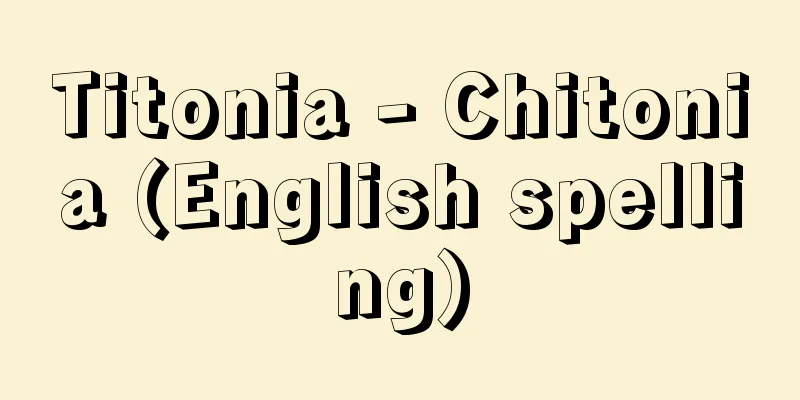Ueno-Hakama

|
A type of clothing worn by nobles. Hakama worn over the under-hakama (shimo-no-hakama) of the sokutai (formal attire). It is front-fastening, with the waist string tied on the right side. As it is made with a relatively narrow four-width tailoring, it is called a kaeshimachi, and to make it easier to sit, the crotch is made separately in the shape of a belt and attached to the waist string in a loop shape. The part below the knee has a hem that is made of a twill, called a hiza-tsugi. The edges of the waist string and the hem are also called omeri, and the outer fabric is about 1 cm thicker than the lining. The outer fabric is white, and for young Emperors, Crown Princes, Princes, and nobles, it is floating fabric with a pattern of ka and arare, while for mature men, it is solid twill with a pattern of yatsufuji. The ranks of nobility and lower classes wore plain twill. The lining was all red plain silk, with white used only for the senior retainers. [Takada Yamato] ©Minoru Sugai Outer hakama Source: Shogakukan Encyclopedia Nipponica About Encyclopedia Nipponica Information | Legend |
|
公家(くげ)の衣服の一種。正装として用いられた束帯の下袴(したのはかま)の上にはく袴。形式は、前合せ式で、腰紐(こしひも)を右側で結ぶ。比較的細い四幅(よの)仕立てのため、返襠(かえしまち)とよんで、座りやすいように襠を帯状に別につくり、輪奈(わな)にして腰紐につけている。膝(ひざ)から下の部分には膝継といって、共裂(ともぎれ)の裾(すそ)がついている。また腰紐や裾の縁(ふち)は、おめりといって裏地より表地が1センチメートルほど控えて仕立ててある。表地は白で、天皇、皇太子、親王、公卿(くぎょう)の若年は浮織物で、文様は窠(か)に霰(あられ)、壮年は固地綾(あや)に文様は八ツ藤。殿上人(てんじょうびと)以下は無文綾。裏地はすべて赤の平絹を使い、宿老(しゅくろう)のみ白を用いる。 [高田倭男] ©須貝 稔"> 表袴 出典 小学館 日本大百科全書(ニッポニカ)日本大百科全書(ニッポニカ)について 情報 | 凡例 |
>>: "The War of Ueno" - Ueno no Senso
Recommend
Bangadarsan (English spelling)
…His first work, the historical novel Durgeśnandi...
Nobleman - Kugyo
This title is derived from the Three Dukes and Ni...
People's Republic (MRP)
One of the centrist parties in France. It was foun...
Deep sea floor
The deep seabed refers to the ocean floor of the ...
Weather - Tenki
A term used to describe the state of the atmosphe...
Anti-Iyasho - Haiyasho
This refers to writings written during the Edo per...
Simchon-ri Archaeological Site - Chinchon-ri Archaeological Site (English name)
A burial site from the Plain Pottery (Bronze Age) ...
Inamuragasaki Park
…The beach is rough and not suitable for swimming...
Norizane Uesugi
Year of death: March 22, 1466 Year of birth: 1410 ...
Norimasa Uesugi
Year of death: Tensho 7 (1579) Year of birth: 1523...
Azabu Gakuen
…Christian educator and politician of the Meiji a...
Oyama Shrine
It is located in Tateyama Town, Nakaniikawa Count...
Hexagonal Conquest - Rokkaku Seibatsu
This was a campaign by the Muromachi Shogunate Sho...
Imperial territory
It refers to the total of real estate and movable...
bori
...But the tail does not regenerate. The mountain...









